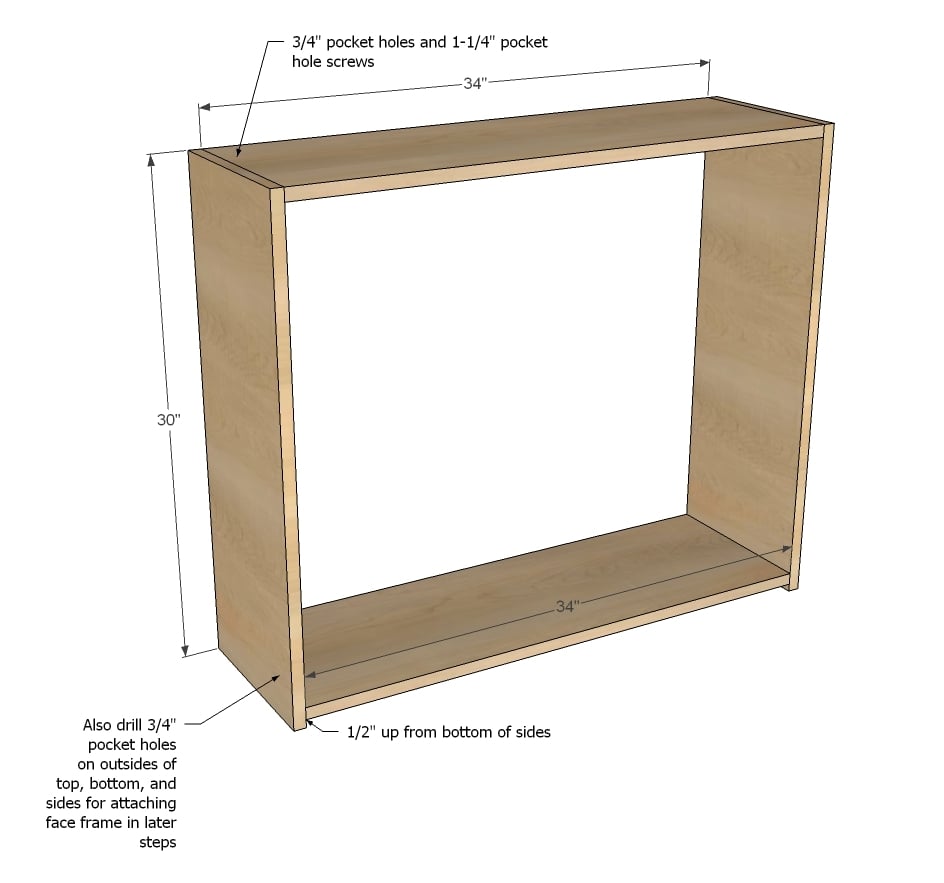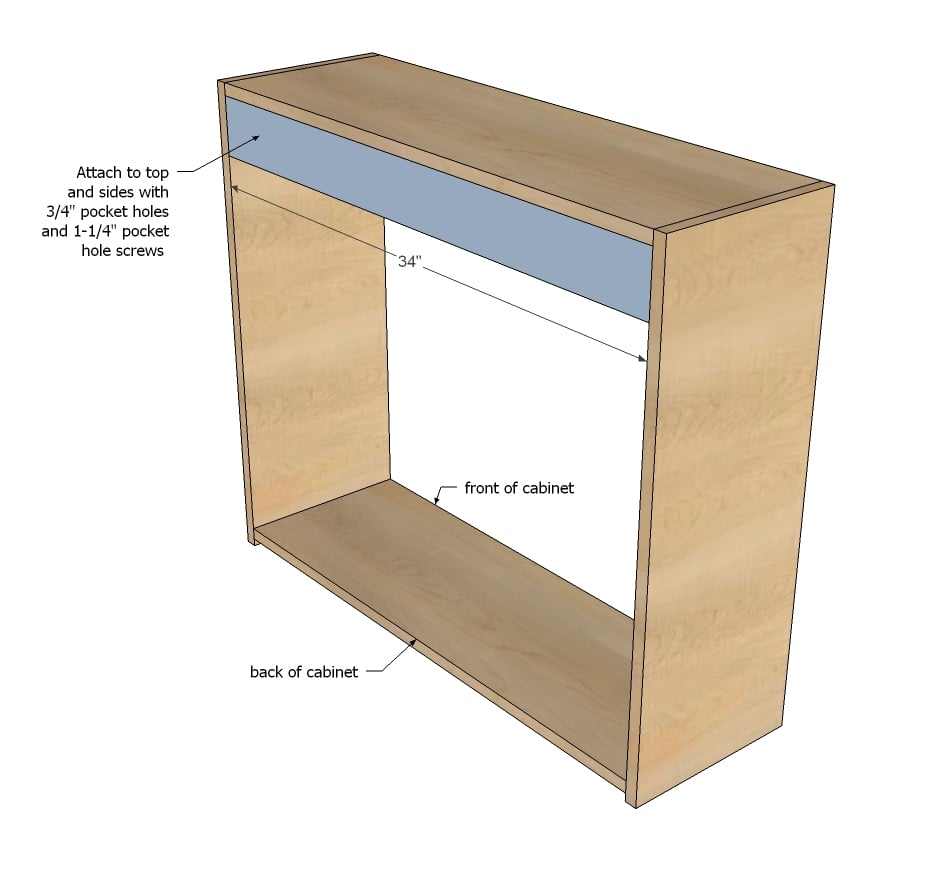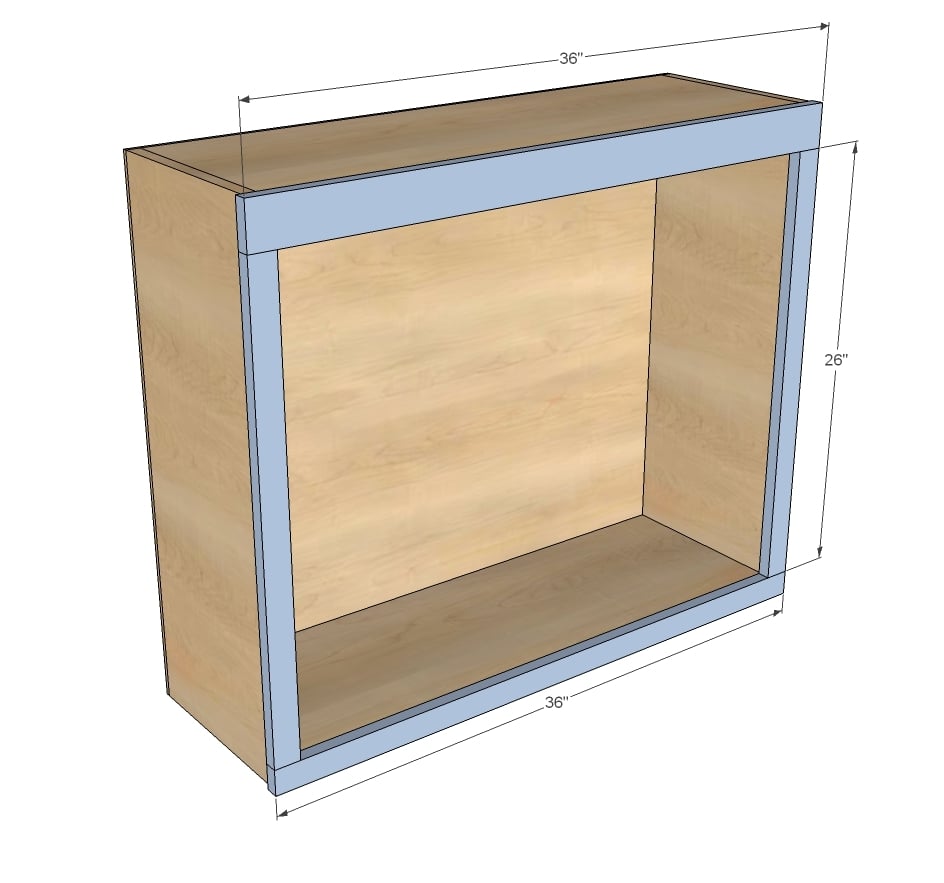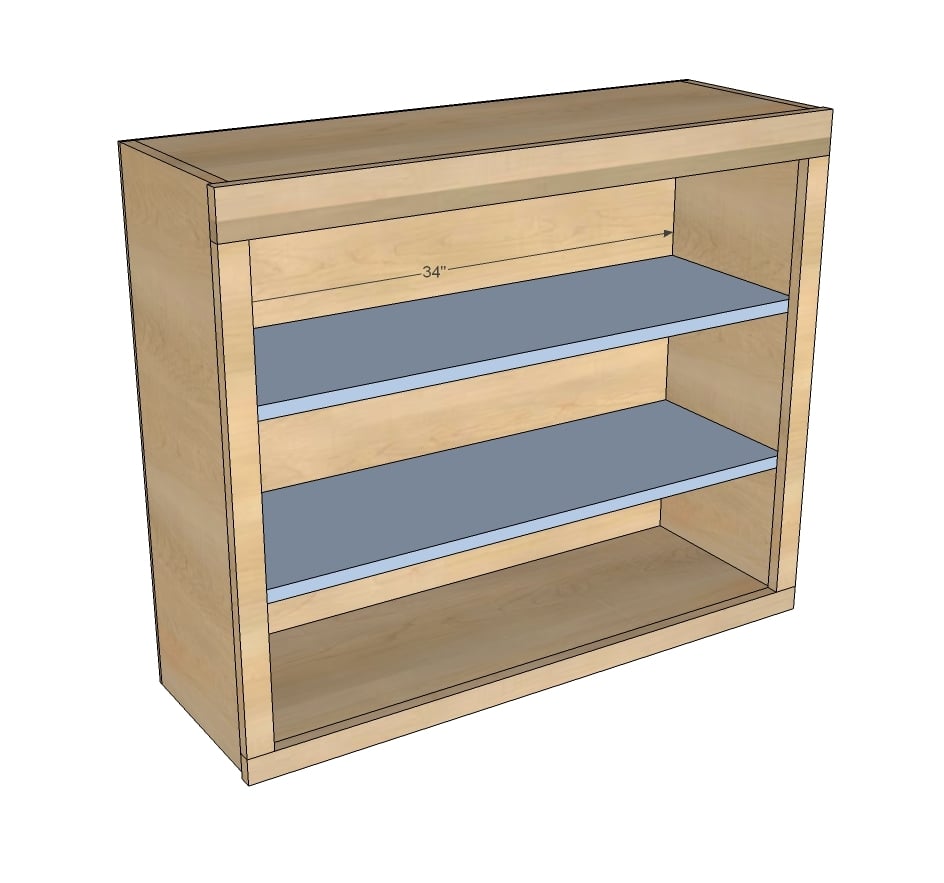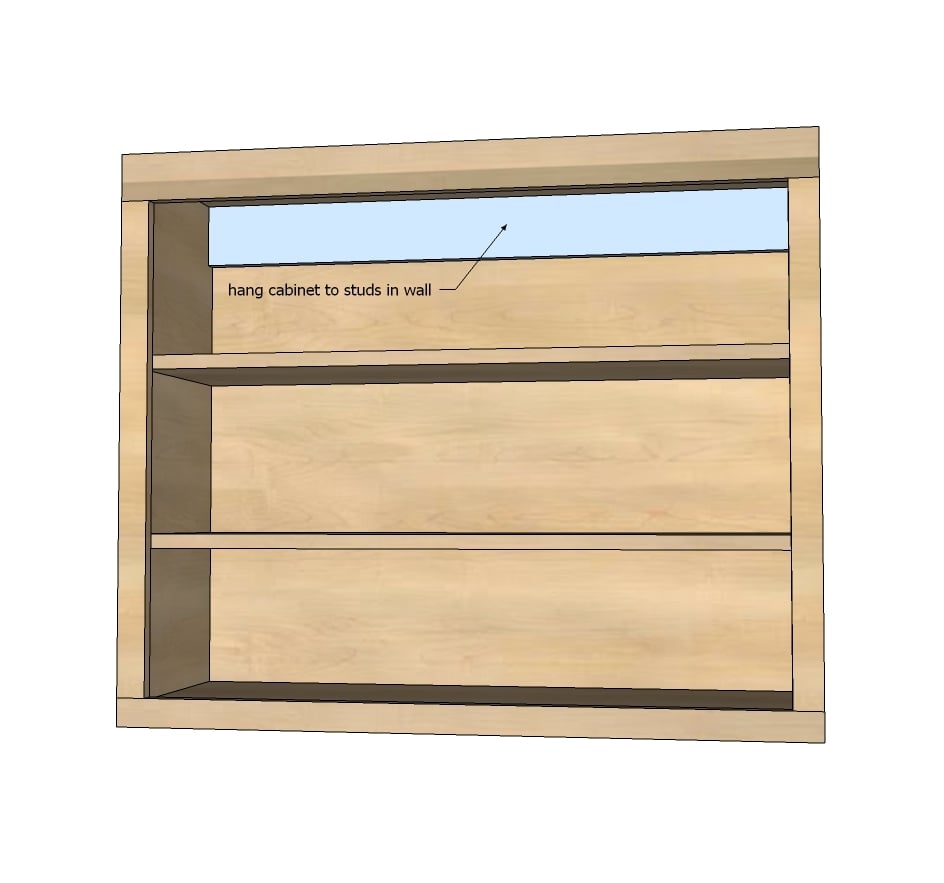
DIY Kitchen wall cabinet plans by ana-white.com
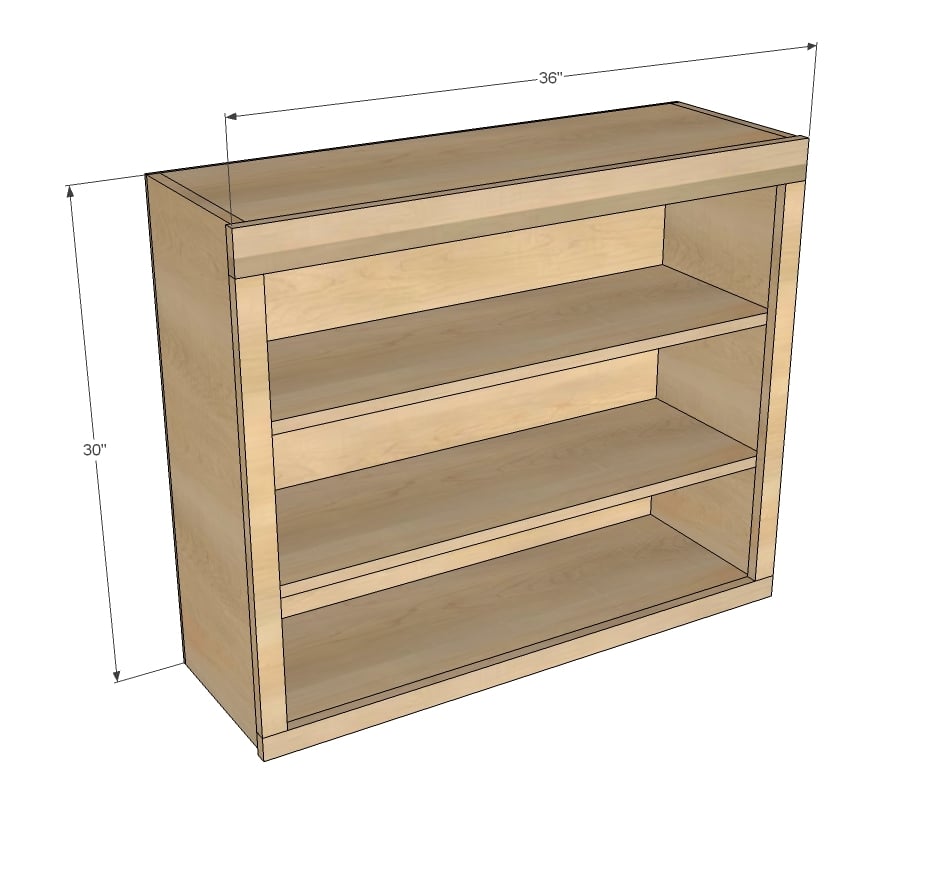
Preparation
3/4" plywood (18 linear feet) ripped into depth of cabinet (we did 10-1/4" but you can choose any width just make sure the width is consistent from cabinet to cabinet)
1/2 sheet of 1/4" plywood
scrap plywood piece for top support/hanging cabinet
3 feet of 1x3s
8 feet of 1x2s
1-1/4" nails for attaching face frame (unless you use pocket holes) or fixed shelves
3/4" nails for attaching back
Glue
1-1/4" pocket holes for building and attaching frame
shelf pins if you use adjustable shelves
edge banding for front edges of shelves
2 - 3/4" plywood @ 10-1/4" (or your rip width) x 30" (sides)
2 - 3/4" plywood @ 10-1/4" (or your rip width) x 34" (top and bottom)
1 - 3/4" plywood or 1x4 @ 34" (can be different width, this piece is just used for hanging on wall)
1 - 1/4" plywood 30" x 35-1/2" (back)
FACE FRAME
1 - 1x3 @ 36"
1- 1x2 @ 36"
2 - 1x2 @ 26"
SHELVES
Fixed with front edgebanding - cut 36" long and trim front edge back 1/8" for edge banding
Adjustable with front edgebanding - cut 35-3/4" long and trim front edge back 1/8" for edge banding
Please read through the entire plan and all comments before beginning this project. It is also advisable to review the Getting Started Section. Take all necessary precautions to build safely and smartly. Work on a clean level surface, free of imperfections or debris. Always use straight boards. Check for square after each step. Always predrill holes before attaching with screws. Use glue with finish nails for a stronger hold. Wipe excess glue off bare wood for stained projects, as dried glue will not take stain. Be safe, have fun, and ask for help if you need it. Good luck!
Instructions
Step 1
Build your carcass by attaching top and bottom to sides. Remember to keep all pocket holes on outsides - the neighboring cabinets or end panels will finish out outsides when you install your kitchen.
TIP: Drill 3/4" pocket holes facing forward along all top, bottom and side edges for attaching face frame in later steps.
Step 2
Step 4
It is always recommended to apply a test coat on a hidden area or scrap piece to ensure color evenness and adhesion. Use primer or wood conditioner as needed.












